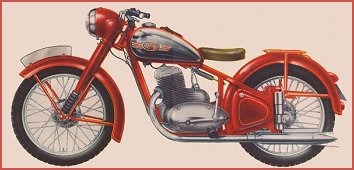
 |
BILL'S PERAK PROJECT (Part 2)
|
During the Summer I decided I would order some new parts rather than rechrome old ones - if anything it was less expensive. So I contacted MZ-B in Germany and ordered new exhaust pipes and mufflers, spokes and rims, fork rubber gators, and a few other bits. With the larger parts being replaced rather than rechromed I decided I would try doing my own rechroming using the Caswell kits.The tires on the bike are original and looked in decent shape. They are, however, over fifty years old. I was able to get new tires and tubes through a dealer in Vancouver that are a block tread and look reasonably close to the originals. |
|
Taking the gas tank off was interesting because it meant first taking the ignition switch box off. Many of the wires to the switch are showing their age with quite brittle insulation. It even had old cloth-type electrician tape (friction tape) on some of the connections - even in the fifties that stuff was fine for hockey sticks but it was never any hell for electrical connections. There was no problem taking the switch box off but I will have to run new wiring to it. With the switch box off I was able to take the gas tank off and get a good look inside it. I was pleasantly surprised by how rust free the inside is. The outside of it will be more labor intensive with removing some dings and rechroming the sides. |